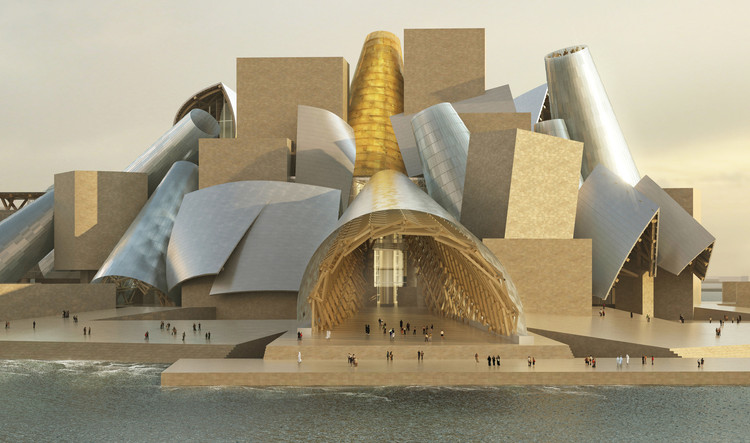
Frank Gehry's Guggenheim Abu Dhabi is finally set to begin construction on Saadiyat Island in the Persian Gulf. First announced in 2007, the Guggenheim project is over a decade in the making for the United Arab Emirates. Situated next to the Louvre Abu Dhabi, the sculptural project will showcase art from around the world within a mountain of plaster blocks and self-cooling translucent cones.

Richard Armstrong, director of the Solomon R. Guggenheim Museum and Foundation, told Euronews that project is “on track" during this year's Culture Summit Abu Dhabi. “We’re on budget and we’re looking forward to the commencement of the building construction soon,” said Armstrong. More than 12 times the size of Frank Lloyd Wright’s Guggenheim New York, the Guggenheim Abu Dhabi does not yet have a specific timeline for construction.

The museum’s collection will encompass art in all mediums produced around the world from the 1960s to the present day, and it aims to be a catalyst for scholarship in a variety of fields, including the history of art in the Middle East in the 20th and 21st centuries. Commissions created specifically for the Guggenheim Abu Dhabi collection will reinforce the museum’s commitment to working with artists and supporting contemporary artistic production. Surrounded on three sides by the gleaming waters of the Arabian Gulf, the building site also serves as a manmade breakwater configured to protect the island’s north beach zone.

Inspired by expansive industrial studio spaces, the museum design reflects the large scale at which many contemporary artists work, and presents new gallery layouts unlike conventional museum spaces. Clusters of galleries in varying heights, shapes, and character allow for curatorial flexibility in organizing exhibitions at dimensions that have not previously existed. Evolving from several main cues, clusters of galleries connected by catwalks center around a covered courtyard. Additional vertical clusters of galleries pile on top of the central circulation creating a combination of vertical and horizontal spaces for exhibition organization.
News via New York Times






